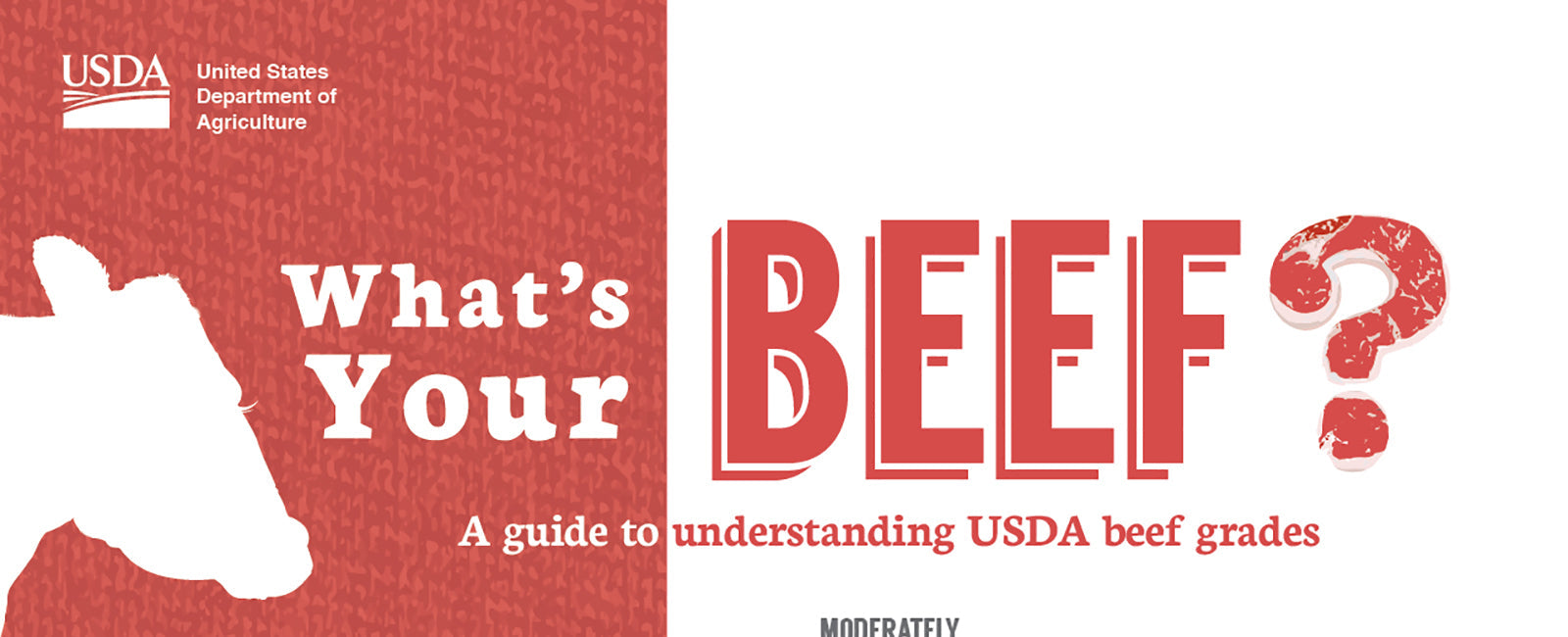Do you feel lost with all the vocabulary surrounding beef? Like what does USDA Prime mean? What’s marbling? What’s dry aged?
Don’t worry, we got you covered if you are feeling confused with all the beef slang! Some of the most common words in the beef industry include marbling, tenderness, USDA grades, and dry-aged.
Marbling: this refers to the white specks and streaks of fat that is located in the lean sections of beef. The name marbling comes from the fact that the fat streaks resemble a marble pattern.
Marbling has become the popular beef term because it’s a great incentive for a delicious and flavorful piece of beef. Marbling adds lots of flavors and it’s also one of the main criteria for judging the quality of beef. The more marbling, the higher the quality of beef it is!
The marbling in beef is determined on the diet of the cattle. Cattle that are raised on a more grain-based diet will have more marbling than grass-fed beef. It kinda makes sense if you think about cattle that only eat grass would be leaner versus cattle that also eat grain.
There are certain cuts of beef that have more marbling than others. For example, the beef rib and short loins are among the most marbled cuts of beef while the beef round and sirloin tend to have less marbling.
Tenderness: the measurement of how easily the beef can be chewed or cut. Tenderness is a desirable quality as tender beef is easier to chew, cut, and generally can be more flavorful.
Tenderness depends on several factors: the amount of muscle, connective tissue, and fat. Tenderness factors are very detailed so let me try to explain further. When heat is applied to beef, two general changes occur: muscle fibers become tougher and connective tissue becomes more tender.
Tenderness can also be affected by the type of heat and length of cooking. Tougher cut beef with lots of connective tissue do best with gentle, moist heat and lots of time. Slow, low-heat cooking allows the collagen between the muscle fibers breaks down which makes the beef have a falling-apart texture. When you get the falling-apart texture the dissolved collagen and juices add a succulent taste.
Do you know what some of the most tender cuts of beef are? That would be rib-eye steak, rib roast, tenderloin (filet), strip steak, strip loin, t-bone steak, porterhouse steak, sirloin steak, and tri-tip. I also know where you can get some very tender beef! (wink wink!)
- USDA Grades: I’m sure you have seen these terms while shopping for beef in the grocery store. What is the difference in all these grades? Let us help you!
- USDA Prime Beef - is produced from young, well-fed beef cattle. It has slightly abundant to abundant marbling and is more commonly sold in restaurants and hotels.
- USDA Choice Beef - high quality, but has less marbling than Prime. This grade has less tender cuts.
- USDA Select Beef - normally more lean than the Prime or Choice grades. This grade is fairly tender but that is because it has less marbling. This cut also may not have as much flavor or juice.

Dry Aged - this is the process where beef is hung in climate-controlled rooms for 21 days after being slaughtered and before it’s packaged. The 21 days really gives the beef time to mature and makes the taste amazing. What happens is the natural enzymes help break down muscle tissue to provide a tender, delicious cut of beef.
Dry Aged beef is typically found in finer restaurants but is becoming more popular on the consumers’ table. Dry Aged beef typically costs more but the flavors are beyond worth it. Dry aged beef is actually considered a delicacy which explains the higher price.
Resources:
-
Alfara, D. “What is Marbling in Steak?”. 06 Feb 2019. The Spruce Eats. 08 June 2019. https://www.thespruceeats.com/what-is-marbling-in-meat-995777
-
Barham, P. “What Makes Beef Tender or Tough?”. Fine Cooking. 08 June 2019. https://www.finecooking.com/article/what-makes-beef-tender-or-tough
-
Gonzalez, J. “Meat Tenderness”. Meat Science. 08 June 2019. https://meatscience.org/TheMeatWeEat/topics/fresh-meat/meat-tenderness
-
Meadows, L. “What’s Your Beef- Prime, Choice or Select?”. 28 Jan 2013. USDA. 08 June 2019. https://www.usda.gov/media/blog/2013/01/28/whats-your-beef-prime-choice-or-select?page=1





